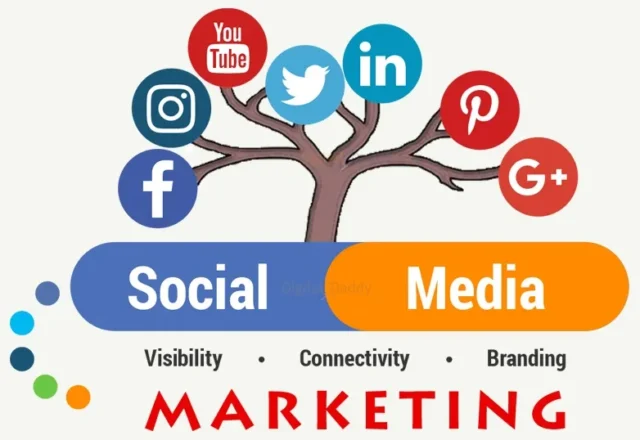In today’s digital age, social media is a vital tool for nonprofits seeking to raise awareness, engage supporters, and drive donations. A well-crafted social media marketing strategy can amplify your nonprofit’s message, connect with your community, and ultimately further your mission. Here’s a step-by-step guide to building an effective social media marketing strategy for your nonprofit.

Table of Contents
Toggle1. Define Your Goals
Before diving into social media, clearly outline what you want to achieve. Common goals for nonprofits include:
- Increasing Awareness: Educate the public about your cause.
- Engaging Supporters: Foster a community around your mission.
- Driving Donations: Encourage financial support through campaigns.
- Promoting Events: Publicize upcoming events and volunteer opportunities.
- Advocacy: Influence public policy and encourage action.
Setting specific, measurable, achievable, relevant, and time-bound (SMART) goals will provide clarity and direction for your efforts.
2. Understand Your Audience
Identifying your target audience is crucial for crafting effective content. Consider the following:
- Demographics: Age, gender, location, and income level.
- Interests: What topics resonate with your audience? What drives them to support your cause?
- Behaviors: How do they use social media? Which platforms do they frequent?
Utilize surveys, social media analytics, and audience research to gain insights into your supporters and tailor your strategy accordingly.
3. Choose the Right Platforms
Not all social media platforms will be suitable for your nonprofit. Consider where your audience is most active and what type of content performs best on each platform. Here are some popular options:
- Facebook: Great for community building, event promotion, and storytelling.
- Instagram: Ideal for visual content and engaging younger audiences.
- Twitter: Effective for real-time updates, advocacy, and engaging in conversations.
- LinkedIn: Useful for professional networking, partnerships, and fundraising.
- TikTok: A rising platform for creative storytelling and reaching younger demographics.
Focus on 2-3 platforms that align with your goals and audience preferences.
4. Develop Your Content Strategy
Your content should reflect your nonprofit’s mission and resonate with your audience. Consider incorporating the following types of content:
- Storytelling: Share stories of individuals or communities impacted by your work to create an emotional connection.
- Educational Content: Provide valuable information about your cause and the issues surrounding it.
- Visuals: Use images, videos, and infographics to enhance engagement and convey messages effectively.
- Calls to Action: Encourage followers to take action, whether that’s donating, volunteering, or sharing your content.
- User-Generated Content: Feature stories and content from your supporters to foster community and engagement.
Create a content calendar to plan and schedule your posts in advance, ensuring a consistent presence on your chosen platforms.
5. Engage and Build Relationships
Social media is a two-way street. Engage with your audience by:
- Responding to Comments: Take the time to reply to questions, feedback, and messages from your supporters.
- Hosting Live Events: Use live video to host Q&A sessions, share updates, or promote events.
- Running Contests or Challenges: Encourage participation and sharing to increase visibility.
- Building Community: Foster discussions around your cause and create a sense of belonging among your followers.
Building genuine relationships with your audience will lead to increased loyalty and support for your mission.
6. Monitor and Evaluate Your Efforts
Regularly tracking and analyzing your social media performance is essential for understanding what works and what doesn’t. Use analytics tools provided by each platform to assess:
- Engagement Metrics: Likes, shares, comments, and mentions.
- Reach and Impressions: How many people saw your content.
- Website Traffic: Use tools like Google Analytics to see how social media drives traffic to your website.
- Conversions: Monitor how many donations or sign-ups are generated from social media campaigns.
Adjust your strategy based on these insights to continuously improve your social media efforts.
7. Stay Adaptable and Informed
The social media landscape is constantly changing. Stay informed about new trends, platform updates, and audience preferences. Be ready to adapt your strategy as needed to remain relevant and effective in achieving your goals.
Conclusion
Building a social media marketing strategy for your nonprofit can significantly enhance your ability to connect with supporters, raise awareness, and drive action. By defining your goals, understanding your audience, choosing the right platforms, developing engaging content, and continually evaluating your efforts, you can create a powerful presence on social media that furthers your mission and makes a meaningful impact. Embrace the potential of social media to elevate your nonprofit’s message and inspire change!


No responses yet